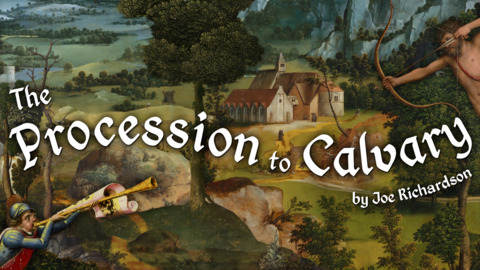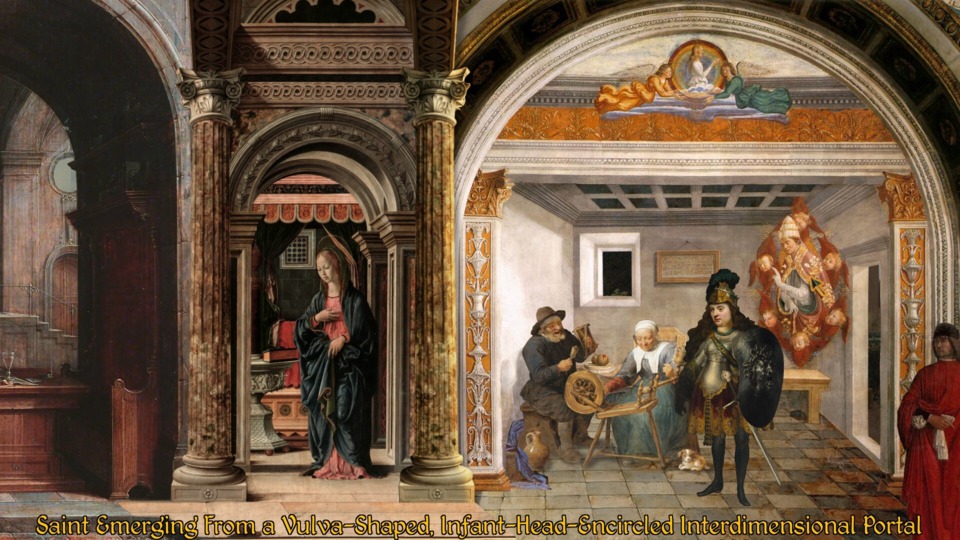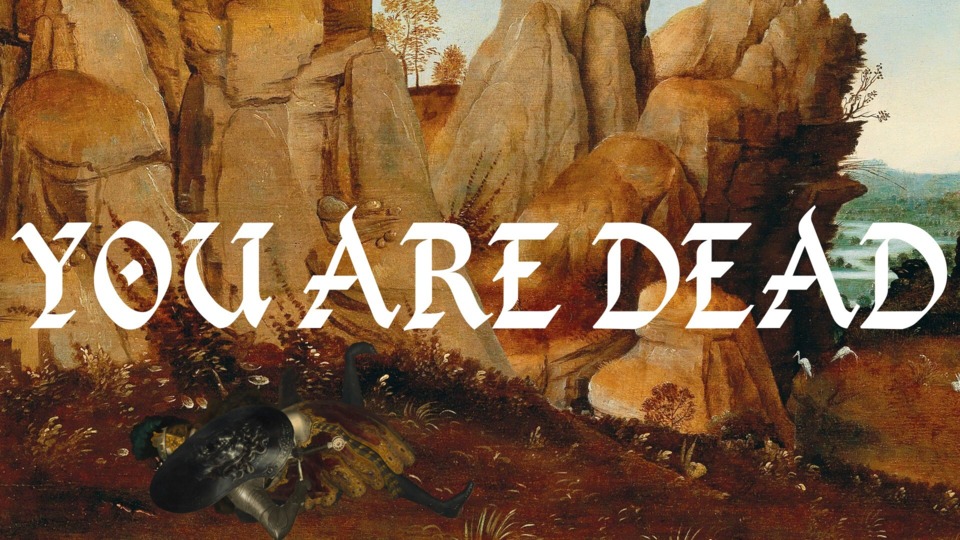Indie Game of the Week 357: The Procession to Calvary
By Mento 0 Comments

Way back in the mid-'90s, British comedy group Monty Python—or maybe just the one of them that felt like getting involved—worked with American developers 7th Level to create what they felt would be the most apposite video game experiences for their particular surreal brand of humor. What they landed on was a trio of classic graphic adventure games that were packed with FMV clips and Terry Gilliam's striking use of animated Renaissance-era artwork. I feel like that spirit of making absurdist goofs via the medium of high-brow (but is it really? There's a lot of butts and stuff) classical art is alive and well in the games of solo developer Joe Richardson, of which The Procession to Calvary is the second to have this style: the first, Four Last Things, is yet another 2017 game I'm going to have to add to the pile while the as-yet-unreleased third, Death of the Reprobate, was recently featured on Steam Next Fest.
The Procession to Calvary, named for the Pieter Bruegel the Elder painting (which I totally knew and didn't look up), sees its unnamed protagonist on the winning side of a holy war against the tyrant, Heavenly Peter. However, being in peacetime means she cannot righteously murder people any more, which is her favorite thing to do. Learning that Heavenly Peter is still alive and that the current, more benevolent monarch, Immortal John, would not be particularly upset upon hearing of his death, the protagonist sets off to gleefully eviscerate the fugitive ousted ruler for less than noble reasons. Naturally, as this is an adventure game, you'll have various roadblocks to overcome by talking to the right people, collecting the right items, using them in the right places, and eventually doing enough favors for people to reach the next area en route to Heavenly Peter's equally heavenly basilica. Optionally, you can just murder anyone who stands in your way, though—surprise, surprise—there may be consequences for your sins later down the road. Kinda like an Undertale thing, but far less altruistic: even without the killing, you're still stealing tons of stuff while insulting (and optionally punching) people.

Every asset in The Procession to Calvary has been carefully carved out of an actual honest-to-goodness Renaissance-era painting and given animations, where applicable. The violence-happy protagonist herself is taken from Rembrandt's portrait of Bellona, a Roman goddess of war. There's an art museum you can visit that's related to a single puzzle but otherwise mostly just exists to show you where the majority of the game's art originally came from: even at its most irreverent and silly, the game and its developer clearly have a deep admiration for the Old Masters. Or maybe they just didn't want to risk getting haunted by a bunch of 500-year-old ghosts pissed that their life's work was utilized for the sake of fart jokes (though I have to imagine they were as popular then as they are now). As much as I sound like I deride the game's base sense of humor, I found it pretty funny on the whole as it locates a middle ground between the smart, sarcastic LucasFilm adventure game humor that became the bar for would-be point-and-click comedians to pass and slangy, more modern (if not too meme-y) turns of phrase and meta jokes. I've left one achievement to collect after I'm done writing here where you simply murder as many people as possible: looking forward to seeing what might result as the body count rises to ludicrous levels (I'm personally holding out for a tough Sans boss fight).
The Procession to Calvary does stick to its traditional point-and-click guns for better and only occasionally for worse. One puzzle has you opera singing at a talent show for a needed piece of bling and it means memorizing the Italian lyrics beforehand: there's about eight lines you need to rattle off one after the other, and if you pause too long to look up a screenshot your protagonist will shrug and tell the audience she forgot the lyrics, causing the mini-game to fail which means talking to the NPC hosting the thing again and repeating the process. The only way to get past it is to either memorize the whole movement or drag in an external notepad: it's the only puzzle of its kind in the game, so it stands out as a particularly annoying lapse into the sort of substandard quality-of-life some older games often exhibited (I still occasionally have nightmares of what the Indiana Jones and the Last Crusade game put me through). Still, though, it's not the end of the world if I'm forced to learn some opera music. Lord knows my uncultured ass could use it. The other big problem is that it takes a while to traverse multiple screens if the solution to a puzzle is on the opposite side of the world: your protagonist has a jaunty run but it's only mildly faster than the normal walk. Many throwbacks let you skip the movement animations to new areas if you double-click the exit, but that sadly did not appear to be the case here (though it does highlight all hotspots with the middle mouse button, so it earns points back for that).

The positives far outweigh the negatives here, including even the generally short runtime since it offers multiple endings depending on how bloodthirsty you chose to be. The puzzles were approachable and only mildly difficult (it did the player a kindness in hinting as to an item or hotspot's use when you examine it, if any), the writing and humor were generally excellent (albeit with a few typos here and there, though I'm convinced I'm the only person left alive who still cares about those), and the striking presentation made great use of its particular theme and the less, let's say, realistic depictions of those old paintings (genuinely surprised at the lack of fucked up cats). I particularly liked that the game was scored by classical music that was entirely diegetic: the musicians appear in every scene, and you can even applaud them if you wish. I'll have to check out Richardson's other works when I have the chance (and once Reprobate is out). And maybe those old Monty Python games again too; I recall them being fun if hopelessly (and deliberately) stupid.
Rating: 4 out of 5.
| < Back to 356: Suzy Cube | 001-100 | 101-200 | 201-300 | > Forward to 358: Costume Quest 2 |
